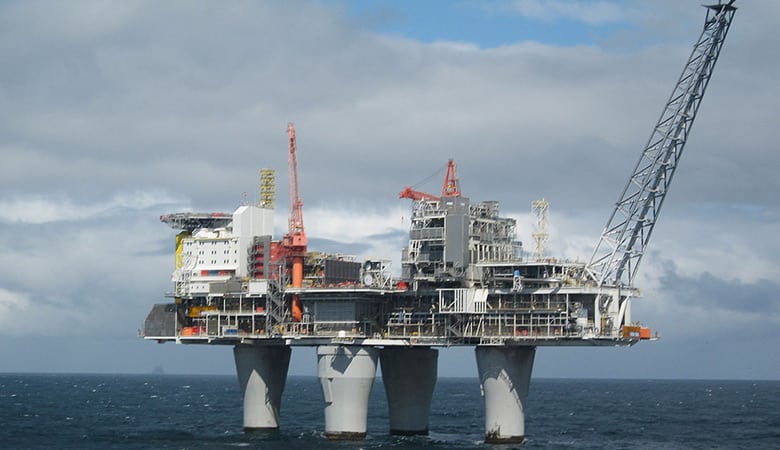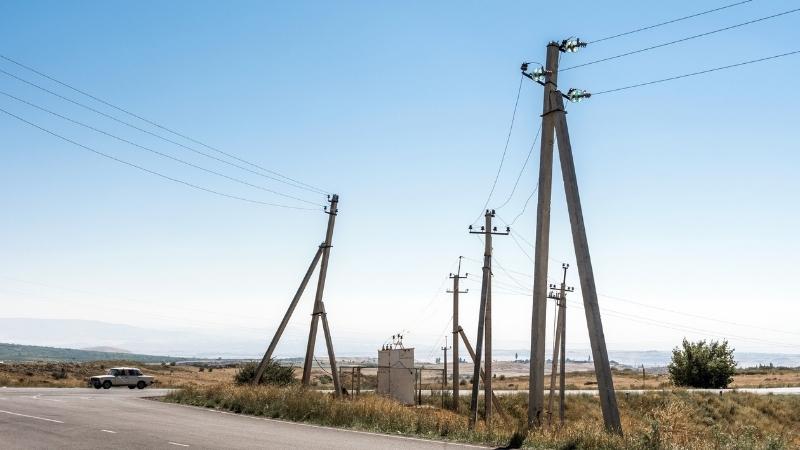Did you know that the earliest use of oil rigs was in Azerbaijan in the 19th century?
Oil rigs have since developed into “floating cities” where people of all walks of life converge to drill precious oil and related products.
Some of the deepest oil rigs dwarf most of the world’s biggest skyscrapers.
‘These marvels of engineering weigh thousands of tons are designed to withstand hostile environments and house all the equipment, personnel, and products drilled.
1. Hibernia
Hibernia Oil Platform
This is the heaviest oil rig in the world as it has a 660,000 ton gravity base structure and a 41,000 ton topside facility. Its combined weight is 701,000 tons. It has a displacement of 1.5 million tons with ballast.
It is situated in the North Atlantic, 196 miles east of New Foundland, Canada. Hibernia is heavily reinforced to withstand harsh arctic conditions. The largest shareholders in its ownership are ExxonMobil and Chevron Canada.
2. Troll A

This is a concrete gravity-based structure off the West Coast of Norway. It is a natural gas platform and weighs in at a whopping 683,600 tons. It has a displacement of 1.2 million tons when anchored down with ballast.
Equinor operates it. It has the distinction of being the tallest structure ever moved in history. It stands at roughly 1,549 feet. It was also the second-heaviest object to be moved by humankind.
3. Gullfaks C
This drilling platform’s substructure weighs 370,000 metric tonnes, while the top side weighs 49,000 metric tonnes. Thus, its combined weight is 419,000 metric tonnes.
It is operated by the Equinor and is located on the Norwegian side of the North Sea. Gullfaks C is in the Guinness Book of World Records as the heaviest object ever moved by humanity in history. It began operations in 1990.
4. Gullfaks A
This is a sister platform to Gullfaks C. Its substructure weighs 340,000 metric tonnes, and topside is 40,000 metric tonnes. Its combined weight is 380,000 metric tonnes.
Gullfaks, which began production in 1987, can harness both oil and natural gas.
5. Gullfaks B
This is yet another sister in this family. Its substructure weighs 173,000 metric tonnes, with the topside weighing 25,000 metric tonnes bringing its total to 198,000 metric tonnes.
Gulfaks B began production in 1988 and harnesses both oil and natural gas.
6. Berkut
It weighs 200,000 tons and is located in the Sea of Okhotsk on the Russian Pacific Coast just north of Japan. It was financed by the Sakhalin-1 Consortium, which includes ExxonMobil and Rosneft.
Berkut means ‘Golden Eagle” in Russian. It is built to withstand very harsh sub-arctic conditions, including earthquakes and huge waves. It has an autonomous power supply and can work in temperatures as low as -44 degrees centigrade.
7. Mars B/ Olympus
This platform weighs over 120,000 metric tonnes. It is a deepwater project in the Gulf of Mexico. Shell owns it.
It was the first deepwater project to expand on an existing oil field with new infrastructure. This structure has a combined deck area of 342,000 feet squared, making it even larger than an NFL Superdome
8. Bullwinkle
This fixed steel oil platform in the Gulf of Mexico weighs 77,000 tons. It was installed in 1988 and was initially owned by Fieldwood Energy LLC.
In 2010, Superior Energy Services took over its operation with a plan to decommission it after its economic life span. The jacket stands at 1,400 feet and is the second tallest object ever moved. It is second only to the Troll A platform.
9. Petronius
This deepwater compliant tower oil platform is located in the Gulf of Mexico. It is operated by Chevron and weighs in at 50,500 tons.
It was the tallest free-standing structure in the world until Burj Khalifa surpassed it in 2010. Despite these impressive statistics, only about 246 feet of Petronius is above the waterline.
10. Baldpate
It is an offshore compliant tower platform near the coast of Louisiana that is owned and operated by the Hess Corporation.
The jacket section weighs 28,900 tons, while the topside weighs an additional 9,800 tons. The combined weight is 38,700 tons.
Baldpate has been designed to be 10 feet laterally to survive the worst of the severe storms that frequent this area.







